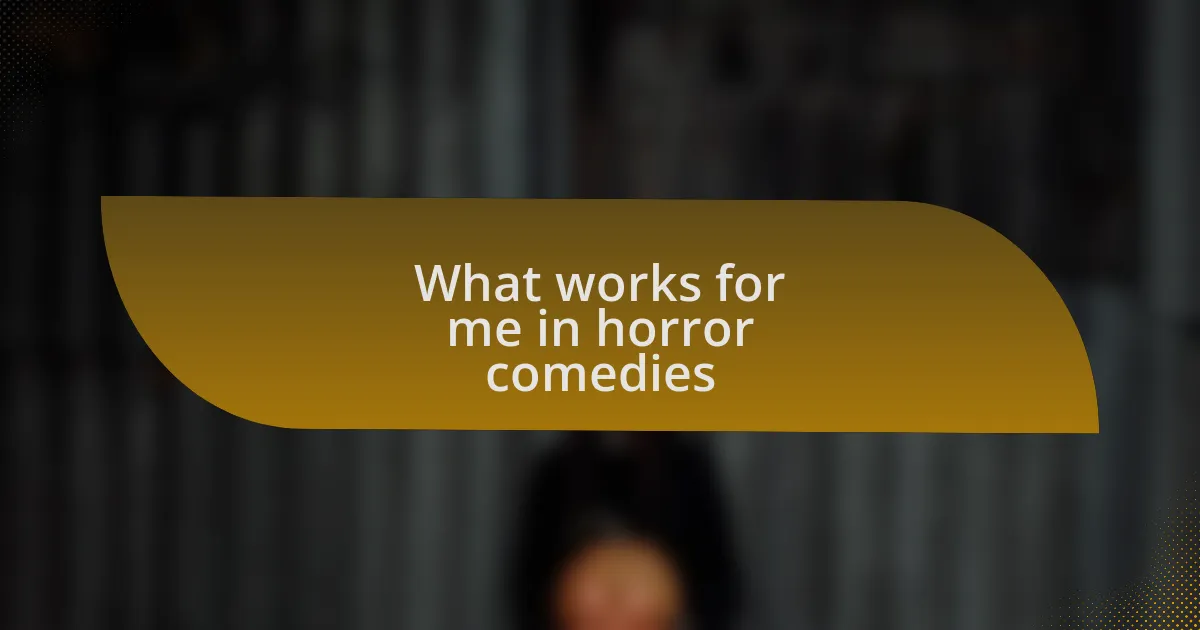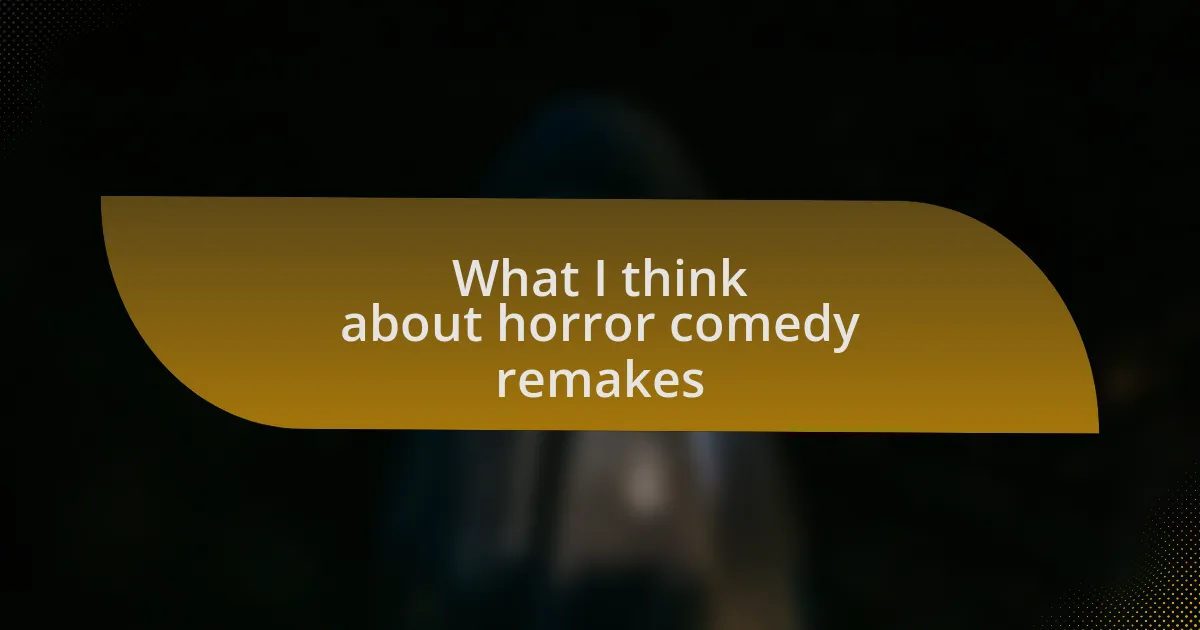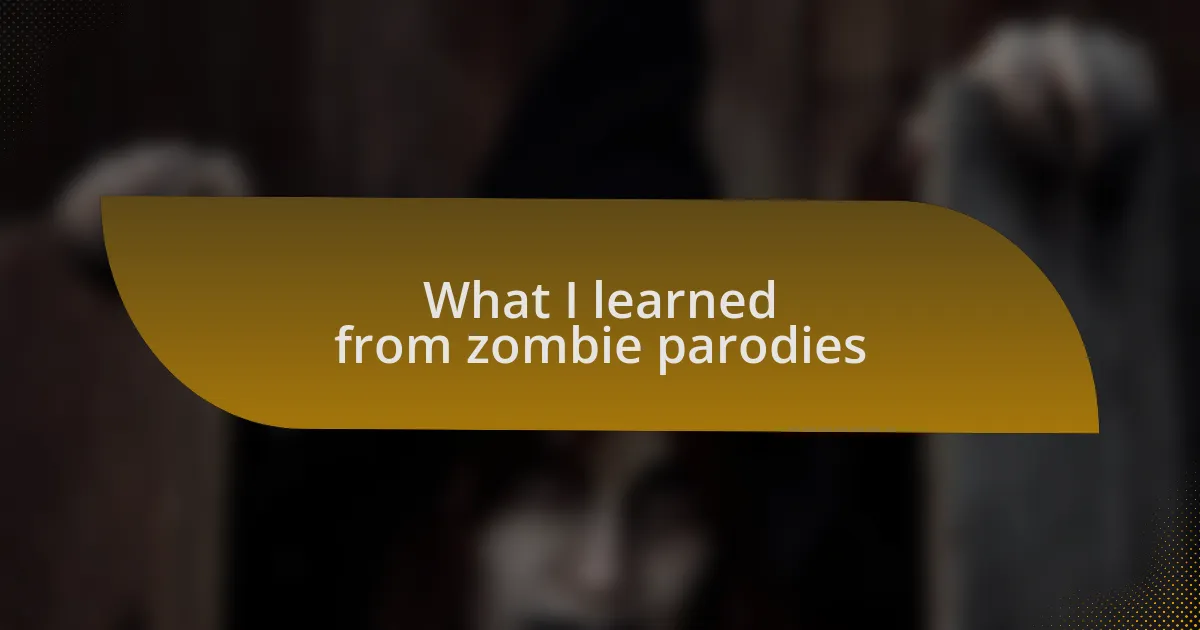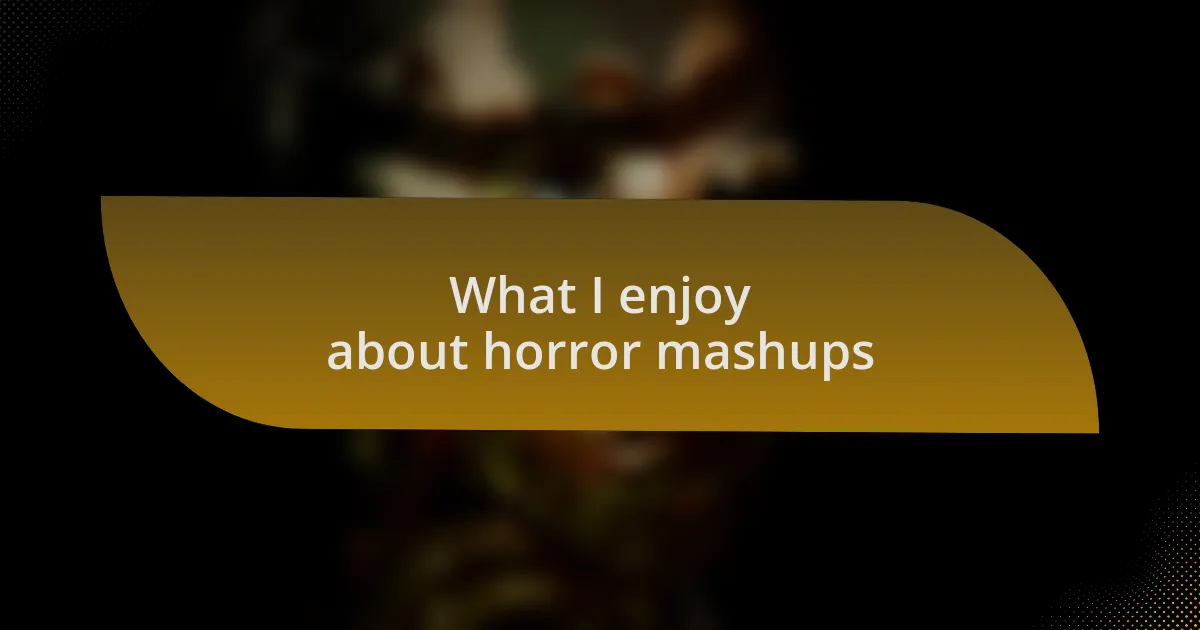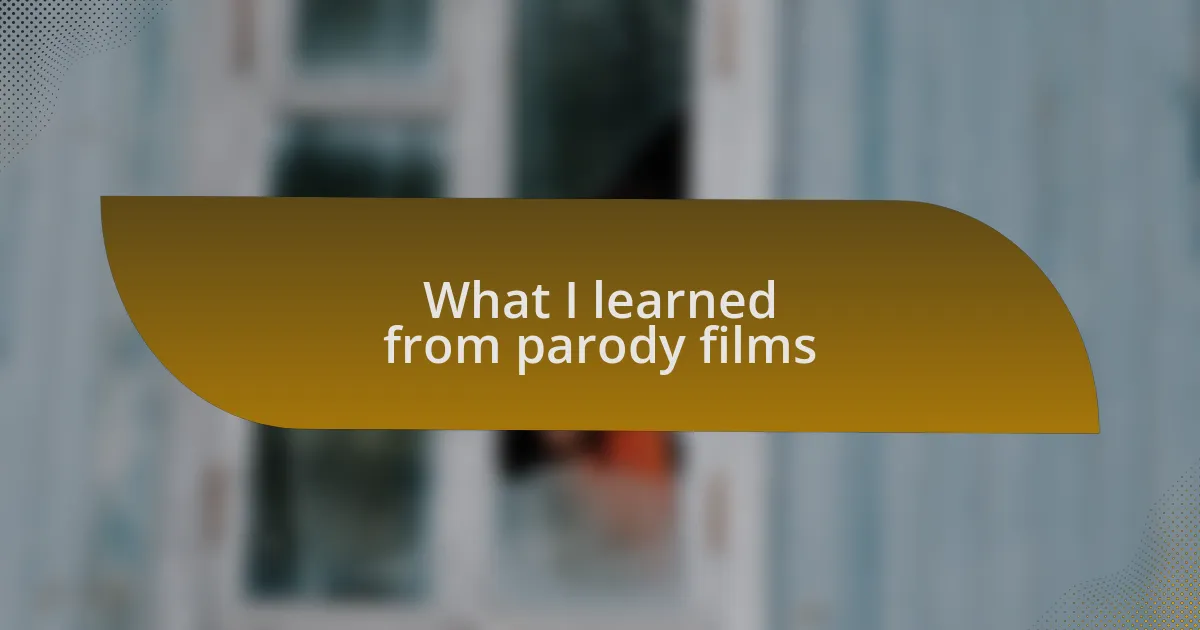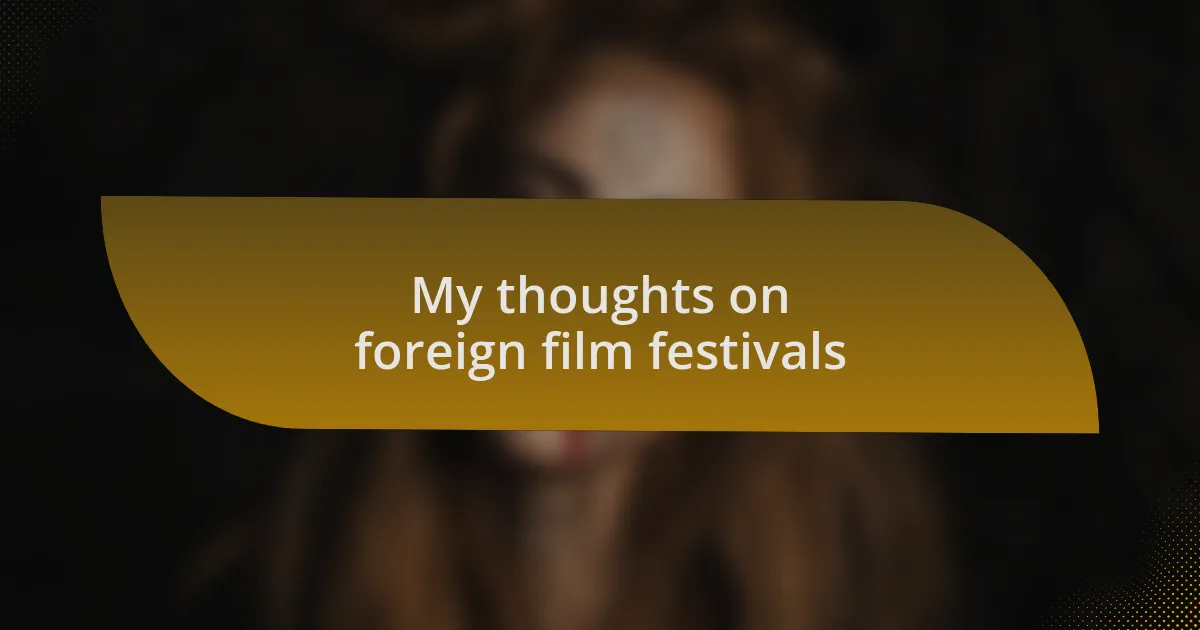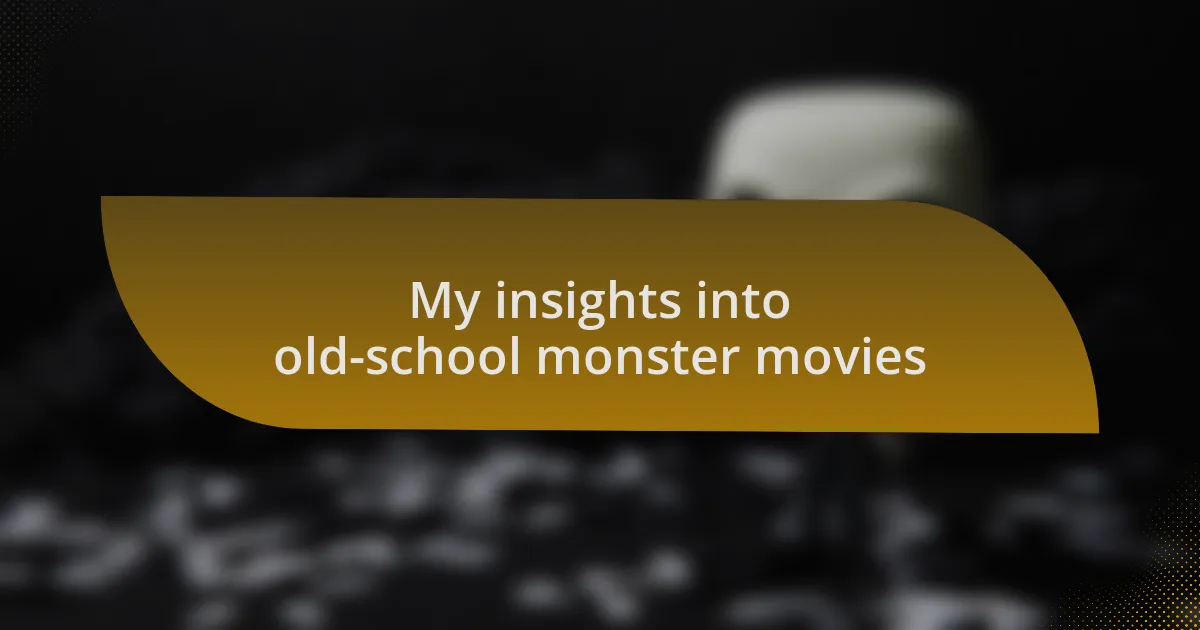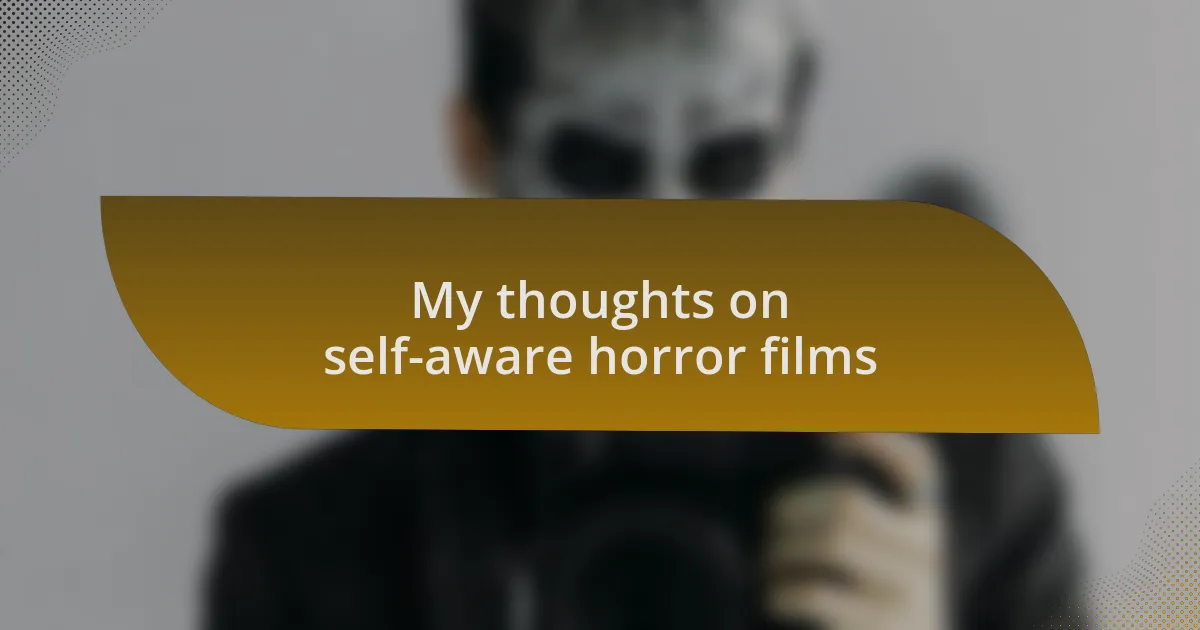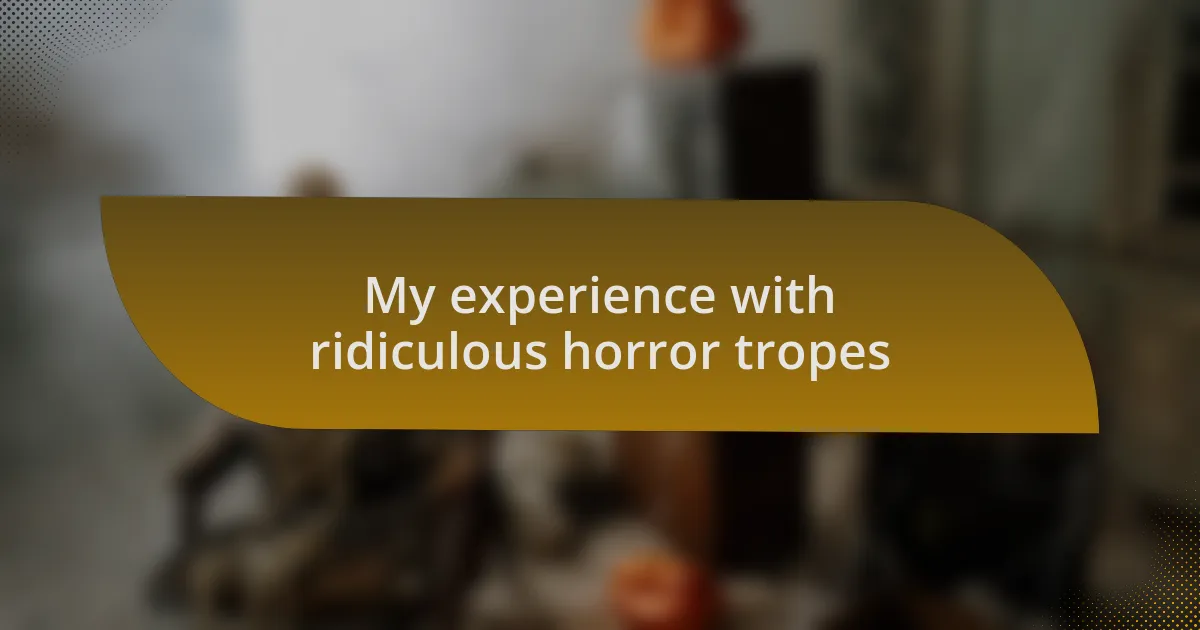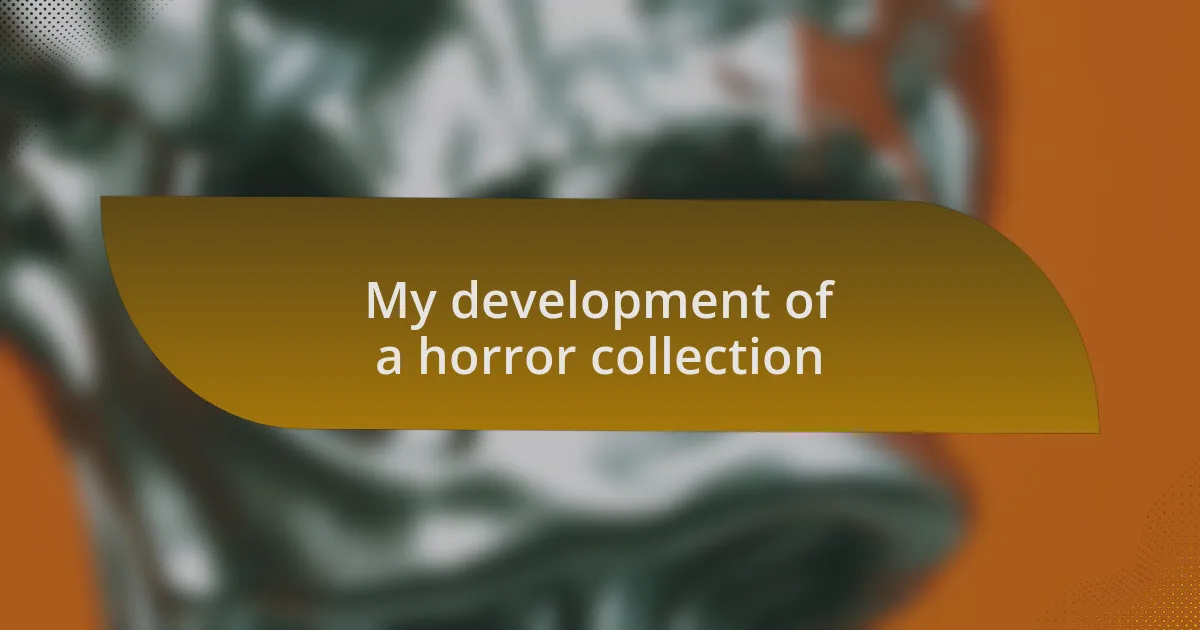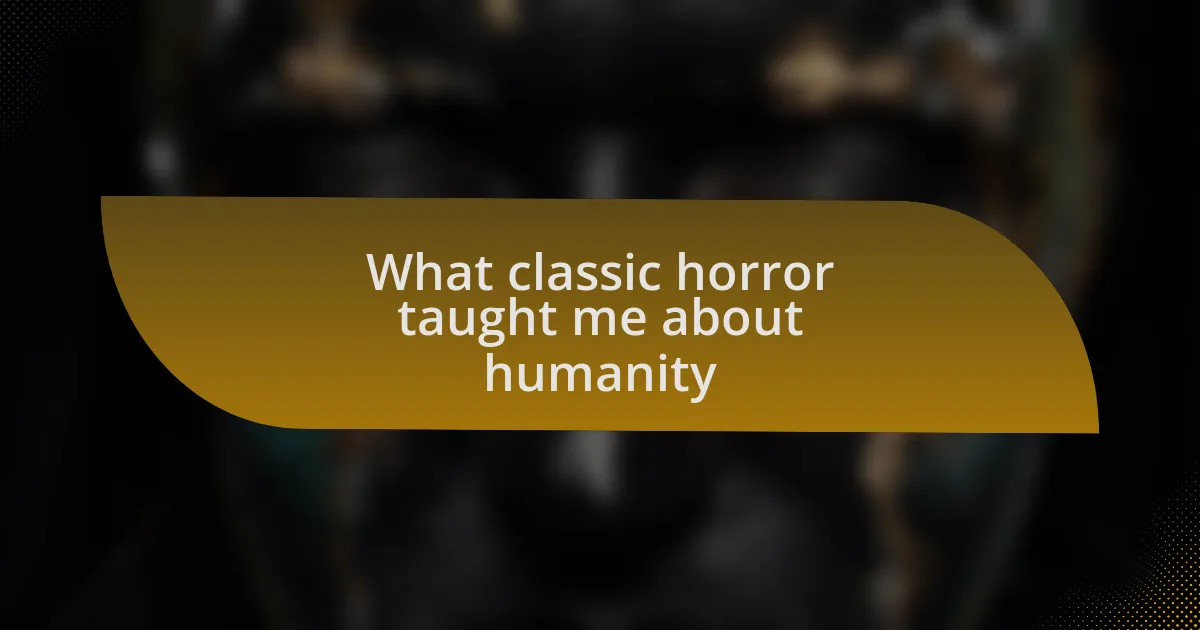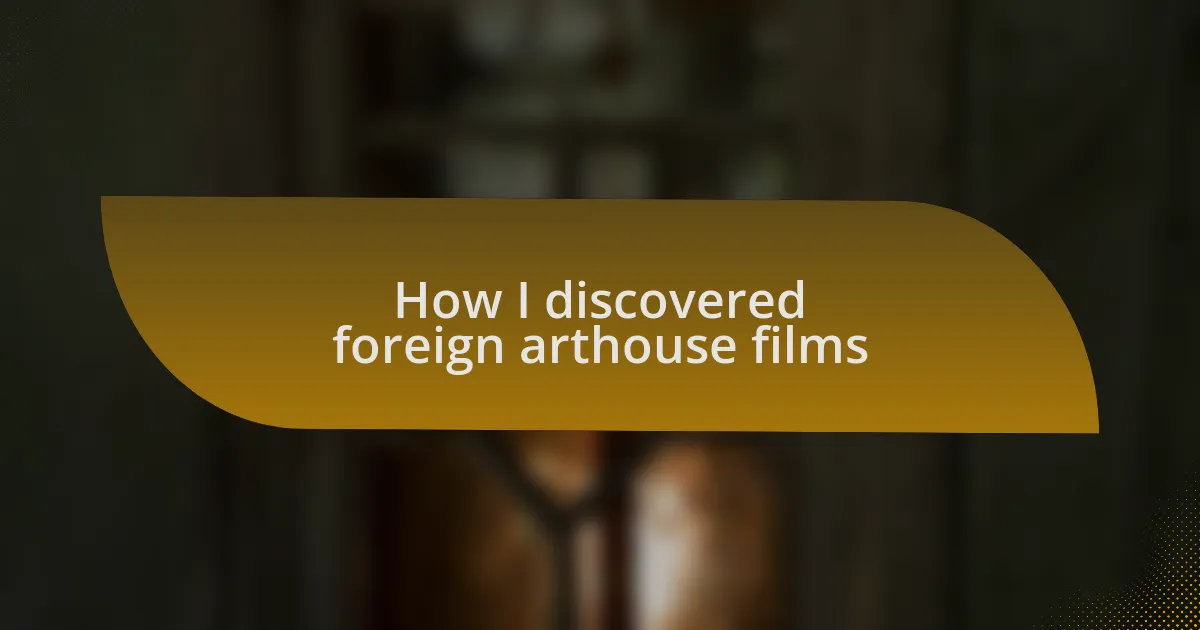Key takeaways:
- Horror comedies blend fear and laughter, utilizing humor as a coping mechanism to enhance viewer engagement with horror elements.
- Key elements include outlandish characters and unique settings that create a balance between suspense and comedic relief.
- Notable films like “What We Do in the Shadows,” “Shaun of the Dead,” and “Tucker and Dale vs. Evil” exemplify the genre’s charm by subverting horror tropes while delivering laughs.
- Analyzing horror comedies involves understanding the interplay between humor and fear, character development, and cultural context to appreciate the layered storytelling.
Author: Julian Ashford
Bio: Julian Ashford is a celebrated author known for his gripping thrillers and thought-provoking narratives. With a background in psychology, Julian skillfully weaves intricate plots that explore the complexities of the human mind and morality. His novels have been praised for their compelling characters and unexpected twists, earning him a dedicated readership. When he’s not writing, Julian enjoys hiking and exploring new cultures, often drawing inspiration from his adventures for his storytelling. He currently resides in the picturesque countryside, where he continues to craft stories that captivate and challenge readers.
Understanding horror comedies
Horror comedies sit at a unique intersection of fear and laughter, blending terrifying elements with humorous situations. I remember watching “Shaun of the Dead” for the first time; the way it juxtaposes genuine horror moments with absurd comedy had me laughing and jumping simultaneously. It made me wonder, how can a film make us feel both fear and joy in such quick succession?
The appeal of horror comedies often stems from their ability to poke fun at horror tropes while still embracing them. I find myself chuckling at cliché moments, like the character who always makes poor decisions—it’s like a playful nod to the audience, acknowledging the absurdity of it all. Have you experienced that moment in a movie where you can’t decide whether to laugh or scream? That emotional push and pull is what makes horror comedies so compelling.
Another interesting facet is how these films often use humor as a coping mechanism for fear. I remember feeling anxious while watching “Tucker and Dale vs. Evil,” but the hilarious misunderstandings between the characters turned my fear into uncontrollable laughter. Isn’t it fascinating how humor can act as a shield against horror, making us feel safe even in the scariest scenarios? That’s the beauty of horror comedies—they provide a space to explore fear without taking ourselves too seriously.
Importance of humor in horror
Humor is essential in horror because it eases tension and allows viewers to engage with fear on a more digestible level. I vividly recall the moment in “What We Do in the Shadows” when vampire roommates face mundane problems with absurdity; it reminded me that laughter can be a respite from the spine-chilling elements lurking just beneath the surface. Can you imagine how heavy a purely horror film would feel without moments of levity? It’s those comedic breaks that create a rhythm, transforming sheer terror into an experience we can enjoy.
What strikes me most about the blend of humor and horror is how they mirror each other. Both invoke strong emotions, but in opposite directions. I’ve noticed that when a film uses humor to satirize horror clichés, it invites the audience to laugh at their own fears, fostering a sense of community among viewers. For instance, in “Cabin in the Woods,” every joke feels like a wink to horror fans, suggesting that we are in on the joke together. Isn’t it amazing how a shared laugh can make us feel less alone in our fears?
Moreover, humor can deepen the emotional stakes in horror comedies. During a heart-pounding scene in “Zombieland,” the characters crack jokes even as danger looms, which not only heightens the comedy but also amplifies the suspense. This balance of humor and horror becomes a dance that leaves us breathless, caught between genuinely caring for the characters and wanting to laugh at their outrageous predicaments. How often do we find ourselves rooting for the characters in these films, even as we realize that their survival is fundamentally linked to their ability to laugh in the face of danger?
Key elements of horror comedies
When I think about the key elements of horror comedies, I can’t help but notice the importance of outlandish characters. These exaggerated personalities not only provide comedic relief but often reflect common fears in a ridiculous light. For instance, in “Tucker and Dale vs. Evil,” the lovable hillbillies are misconstrued as villains, making their antics both hilarious and relatable. Have you ever seen a character who’s so absurd, yet so identifiable, that it makes you laugh and cringe at the same time?
Equally crucial is the setting, which often contributes to that delightful clash between horror and comedy. A seemingly innocuous backdrop can become a playground for macabre humor—think of how “Shaun of the Dead” expertly transforms an ordinary pub into a battleground of zombie encounters. This juxtaposition creates a sense of unpredictability. Don’t you find it intriguing how the familiar can suddenly shift into something terrifyingly funny?
Lastly, the pacing of horror comedies plays a significant role in their effectiveness. The careful balance of comedic beats against suspenseful moments keeps viewers on their toes. I remember watching “What We Do in the Shadows” and laughing out loud during moments right before a scare, which also heightened my anticipation for what would happen next. Isn’t it fascinating how skillfully timed humor can elevate tension, ensuring that the terror feels more engaging than overwhelming?
Top horror comedies to watch
When it comes to top horror comedies, “What We Do in the Shadows” stands out as an absolute gem. The film follows a group of vampire roommates navigating modern life while trying to uphold ancient traditions. I remember the first time I watched it—I found myself laughing at how these creatures of the night grappled with mundane issues like finding a date. Who would have thought a vampire could be so relatable?
Another must-see is “Shaun of the Dead,” which seamlessly blends zombie horror with British wit. I love how Shaun’s hilarious attempts to save his friends become a reflection of his struggles in everyday life. It’s a brilliant reminder that amid all the chaos, humor can be a lifeline. Have you ever watched a film that makes you laugh while making you reflect on deeper themes? This one definitely does!
Lastly, “Tucker and Dale vs. Evil” is a mirror of our perceptions about horror tropes. The way it flips stereotypes on their head while delivering laughs is nothing short of brilliant. I still chuckle when I recall the scenes where the innocent hillbillies unwittingly become the targets of a group of misguided college students. It’s comedic gold that challenges our biases while keeping us entertained. How refreshing is it to find humor in a genre that often takes itself so seriously?
How to analyze horror comedies
Analyzing horror comedies requires an understanding of both genres—horror and comedy. I’ve found that considering how the film juxtaposes humor with fear can reveal its underlying messages. For instance, does the humor arise from absurd scenarios that amplify the tension, or is it used to provide comic relief during tense moments? Each layer adds depth to the viewing experience.
I’ve often noticed that character development plays a crucial role in how these films balance scares and laughs. Think about characters like Shaun or the vampires in “What We Do in the Shadows.” Their relatable struggles make the horror elements feel more genuine and engaging. This connection can heighten the comedy because we care about their outcomes.
Additionally, the cultural context is essential to consider. Humor can be highly subjective, influenced by societal norms and personal experiences. When I watched “Tucker and Dale vs. Evil” for the first time, I was struck by how the film cleverly critiques horror clichés while offering laughs. This layering of humor over horror not only entertains but also invites viewers to reflect on their own perceptions of the genre. What do you think—does the comedy lead you to appreciate the horror more? I certainly believe it does.
Personal experiences with horror comedies
I remember the first time I caught “Scary Movie” on late-night television. It was such a surreal experience, blending genuine horror tropes with over-the-top humor. I found myself laughing so hard during the parody moments that I almost forgot about the frightful scenes. This unique mix kept me on my toes—one moment, I was chuckling, and the next, I was nervously glancing at the shadows in my living room.
Then there’s “The Cabin in the Woods,” which truly turned my expectations upside down. Initially, I thought it was just going to be another slasher flick, but the clever twist kept me engaged. I felt an odd sense of satisfaction every time a horror trope was subverted. It made me question how our collective fear and humor can coexist. Have you ever had a movie experience that made you rethink what you knew about both genres? For me, it was like discovering a hidden layer of storytelling that deepened my appreciation.
More recently, watching “What We Do in the Shadows” felt like a refreshing breath of fresh air. The blend of dry humor with traditional vampire lore made me continuously laugh out loud. The absurdity of ordinary life mixed with supernatural elements resonated with me. It left me wondering, how can something so terrifying also be laugh-out-loud funny? This interplay between horror and comedy not only entertained me but also made me reflect on my own perceptions of fear and absurdity in everyday life.
My favorite horror comedy moments
One of my all-time favorite horror comedy moments has to be from “Shaun of the Dead,” specifically the scene where Shaun and his friends attempt to blend in with the zombie apocalypse. I still chuckle thinking about how they walk in slow motion to avoid detection—who knew that faking nonchalance could be so humorously effective? It’s not just the laughter; it’s the realization that even in dire circumstances, humor can be a survival tactic.
I vividly recall the scene in “Tucker and Dale vs. Evil” where Dale accidentally causes a series of hilarious misunderstandings. When the group of college kids assumes he’s a killer just because he’s holding a chainsaw, I couldn’t help but burst out laughing. It struck me how often horror movies play with perception, and this twist redefined the limits of both fear and comedy for me. Is it possible to see the absurd side of what we usually find terrifying? Of course, it is, especially when a chainsaw moment turns into a comedy of errors.
Then there’s the uproarious chaos in “What We Do in the Shadows” when the vampires try to navigate the modern world, particularly the housemate dispute over dishes. The absurdity of ancient beings squabbling about chores struck a chord with me—it was both relatable and hilariously inappropriate. It made me realize that even supernatural creatures have mundane struggles. Isn’t it fascinating how humor can emerge from such unexpected places in horror settings? Moments like these leave me laughing while also pondering the quirks of both humanity and monstrosity.
